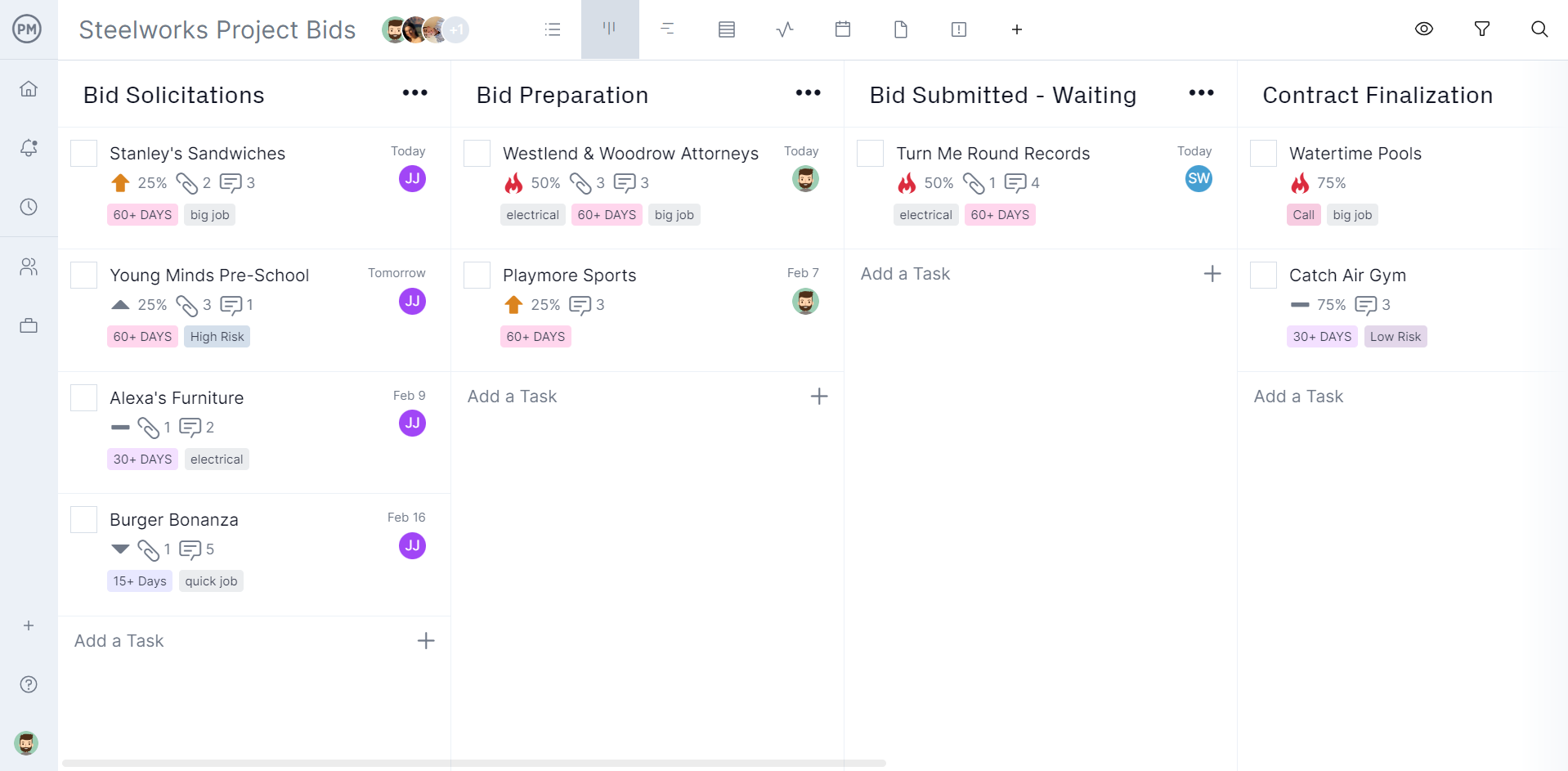Projects need resources, often consistently. Suppliers and contractors deliver those products and services that help fulfill the project. Managers want to stay on budget and resources cost money, which is why they use a request for quote (RFQ) to get pricing from suppliers and contractors.
A request for quotation differs from a request for proposal or request for information. We’ll show you why and when you need to use an RFQ. Then we’ll list what should be included in the request for quote, the industries that use it and we’ll even have an example to illustrate what we mean.
What Is a Request for Quote (RFQ)?
A request for quote is when a company solicits suppliers or contractors to submit a price quote for what their product or service will cost for a particular task or project. It’s sometimes referred to as an invitation for bid (IFB). This process is especially important to companies that need a constant supply of a standard product, such as manufacturers.
Using a request for quotes is part of a company’s procurement process and helps identify suppliers or contractors who can deliver what’s needed, when it’s needed and for a price that’s acceptable to the project budget. It provides project details and the service or product and materials needed, including the price.
Once the request for quotation has been approved and you’re contracted with the supplier or contractors you’ll be using for the project, you’ll want to track those costs as you move through the project’s life cycle. ProjectManager is award-winning project and portfolio management software with robust Gantt charts to monitor resources to ensure they’re aligned with the terms and conditions of the contract. Setting a baseline captures your schedule and costs so you can track that planned effort against your actual effort in real time. Get started with ProjectManager today for free.
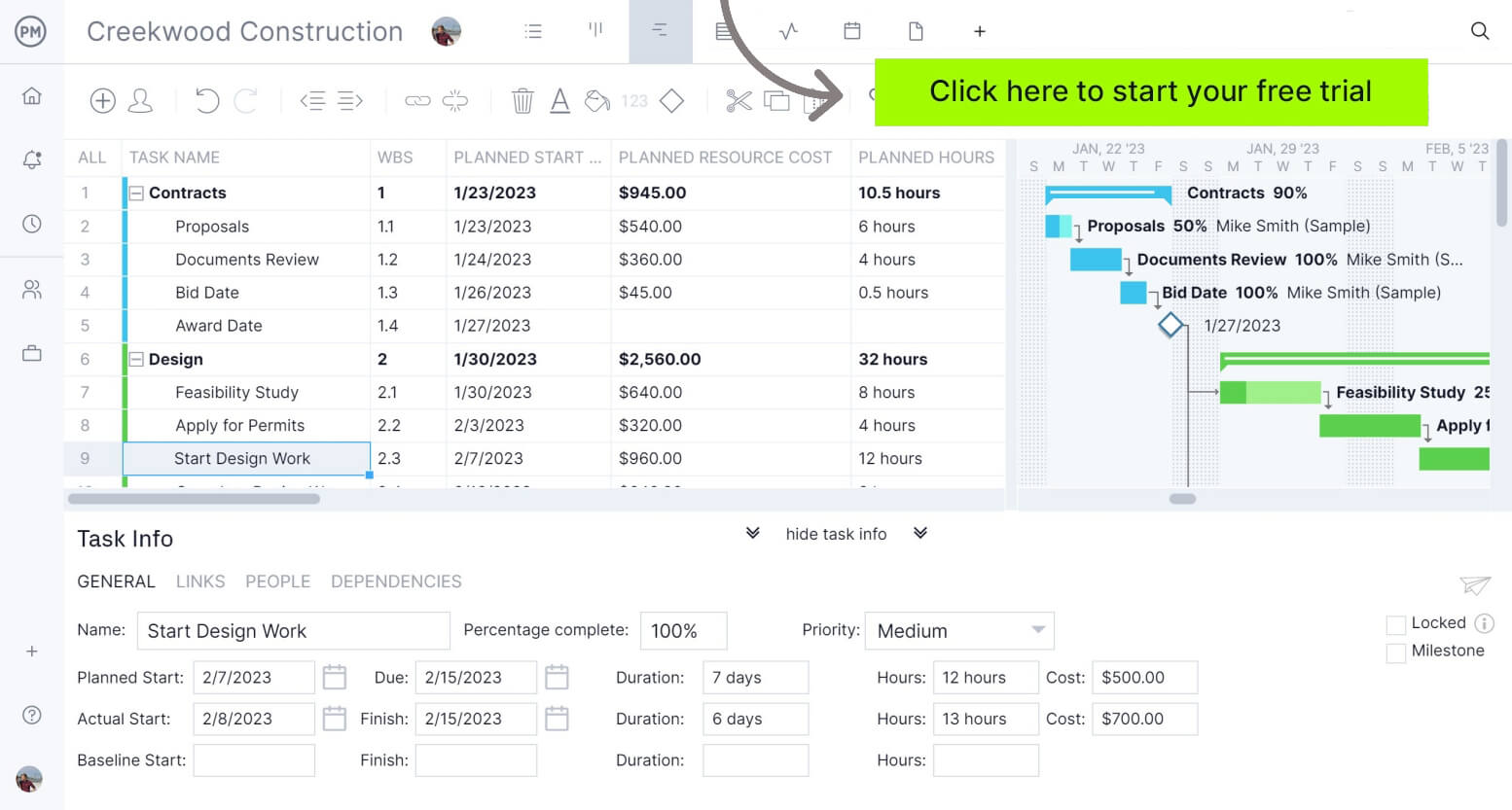
Request for Quote (RFQ) vs. Request for Proposal (RFP)
While a request for quote looks to secure products or services at a cost that complies with the budget of a project, it differs from other requests. For example, there’s also a request for proposal, which is another business document.
The request for proposal differs from the request for quote as it announces a project, describes that project and solicits bids from contractors who will be hired to complete the project. It’s farther-reaching than a request for quote, which deals with the project materials or specific contractors who will focus on a part of the larger project.
Request for Quote (RFQ) vs. Request for Information (RFI)
Another business document used in projects, such as manufacturing and construction, is a request for information. This, too, is not the same as a request for quote as the request for information is more of a formal process. Customers use this to request information from suppliers or contractors of the goods and services that they might contract with.
The request for information is usually many requests that are intended to narrow down the choices of bids to determine which supplier or contractor is the best fit for the job. Therefore, it can be seen as part of the request for quote process. Gathering this information leads to a more informed decision and a better fit for all involved parties.
When Should You Use a Request for Quotation?
RFQs are an important construction document but they can also be used to streamline the procurement process of organizations from any industry. Basically, a request for quotation should be used when one knows what product or service is needed, but need more information from various vendors to make the best decision.
For example, whenever you need project resources such as raw materials, you should send an RFQ to as many qualified suppliers as possible, so you can compare the prices and quality they offer and other factors such as payment and shipping terms to choose the one that best fits the needs of your project. Once you’re ready to purchase those project resources, you can send a purchase order to the vendor.
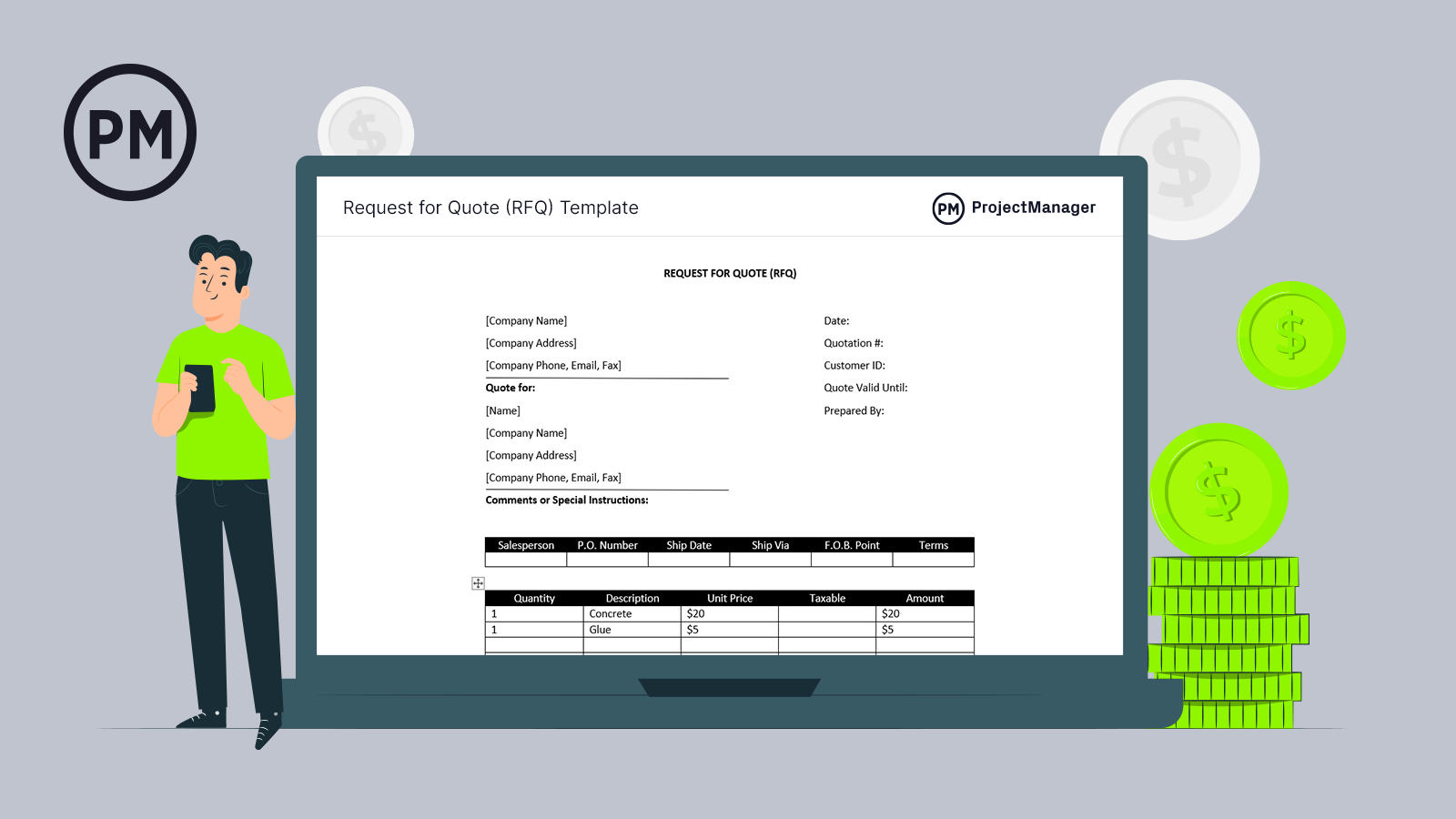
Get your free
Request For Quote Template
Use this free Request For Quote Template for Word to manage your projects better.
What Should Be Included In a Request for Quote?
Now that we understand what a request for quotation is, how it differs from other request documents and when it’s used in a project, let’s get into specifics. What should be included in a request for quote to ensure it’s thorough? A request for quote should have these parts.
- Information About the Buyer and Vendor: The first part of any request for quotation is to add contact information for both the buyer and the vendor. This includes the company name, address, contact information, such as name, phone, and email, as well as the date the RFQ is issued and the deadline for a response.
- Product Description: Describe the product goal and detail for the project. This allows the vendor to have a clear picture of what your final project deliverables will look like and how they’ll contribute to its completion.
- Quantity: This is how many items you’ll want to purchase.
- Unit Price: The unit price is how much one of the items will cost.
- Cost: This is the total price. It’s calculated by multiplying the unit price by the quantity.
- Shipping Information: Finally, the shipping information isn’t only where the items should be shipped, but how you want them shipped, such as how they’re packed, what sort of transportation and payment details.
What Can a Request for Quote Be Used For?
A request for quotation is used for procurement. It’s part of a process that’s used when soliciting quotes for a specific item or service in a project. This is commonly used in two industries: construction and manufacturing.
Construction RFQ
Besides helping with the procurement of construction project resources, there are various uses for RFQs in construction. For example, project owners might submit a request for quotation to a contractor to find out how much would it cost to execute the construction activities in a scope of work.
Manufacturing RFQ
In manufacturing, a request for quote is one of the steps in purchasing materials. It specifies the part needed in detail and submits the request to vendors. This buying process allows manufacturers to get a cost-effective price for parts and ensures that those parts meet quality standards and project requirements.
Request For Quote Example
Let’s take a look at a construction request for quote example. A general contractor needs to purchase concrete to build the foundation of a building. They fill out a request for quote document with the name of their company and contact information. There’s also a section to write the name and contact information for the vendor to whom they’ll be sending the request for quote.
Other general information on the RFQ form includes the date of the request, quotation ID, customer ID and the date until which the quote is valid. Finally, there’s a section to note who prepared the quote.
Beneath that is a place for special comments that aren’t addressed in the RFQ. There’s a section under that to note the salesperson who is supplying the quote, the PO number for the invoice, ship data, how it’ll be shipped, the FOB point, which stands for free on board. This indicates whether the buyer or the seller is liable for goods that are lost, damaged, or destroyed during shipment. Then the terms of the agreement are sketched out out.
The next section defines the actual good or service. There’s a place to note how many you want, describe the item and add its unit price and tax. The total amount of each line item is then added and at the bottom of the RFQ is the subtotal, tax rate, sales tax, any other taxes and the total.
Request For Quote Template
To facilitate the request for quote process, use our free request for quote template for Word. Everything a general contractor or manufacturer needs to send to a vendor so they can make a bid on the project is enclosed.
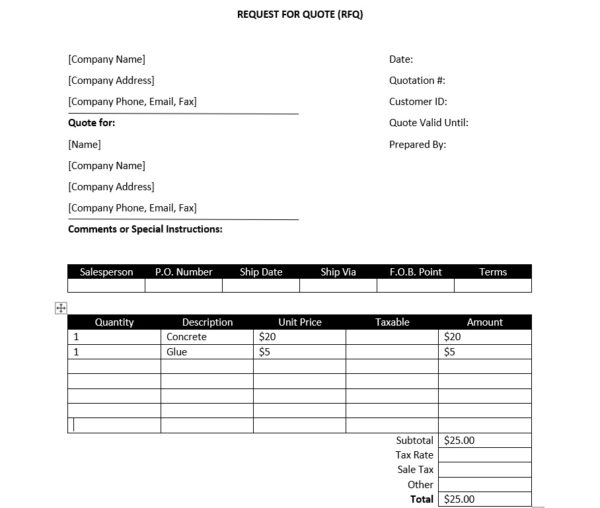
Using our free RFQ template streamlines the process and allows project managers to agree on price. Use our free RFQ template for Word to get the goods or services you need at a price that fits your budget.
Benefits of Using a Request for Quote
The main benefit for the buyer is they can gather competitive bids from different suppliers and vendors. This allows buyers to better evaluate the pricing and quality of the items and make more informed purchasing decisions. It also serves to help them find the lowest price. This competitive environment encourages suppliers and vendors to offer their best prices, which leads to cost savings for the buyer.
Related Procurement Management Templates
The request for quote is only one part of the larger procurement management process by which general contractors and manufacturers get supplies for their projects. If you want free templates for other aspects of the procurement process, we have those too. Below are a few free templates that relate to procurement management.
Construction Quote Template
A construction quote is a document that allows contractors and suppliers submit a response to a RFQ, whether that quote is used to estimate the costs of resources such as raw materials, equipment or machinery or the estimated cost of completing construction work.
Request for Information Template
A request for information (RFI) is a document used to collect data on products, goods and services from existing or potential suppliers. Our free RFI template for Word is broken into two parts: one for the description and the second for the response.
Request for Proposal Template
A request for proposal enables the project owner to review all professional submissions from general contractors, vendors and more. Our request for proposal template keeps information organized and ensures you choose the right submission for your project requirements.
Purchase Order Template
Another piece of the procurement process is the purchase order. It’s the contract between the buyer and the seller. Our free purchase order template for Excel can be used as a legally binding contract to outline the price, quantity, delivery and terms of payment.
How ProjectManager Helps Manage Procurement
The above templates are great for getting information and setting a price before signing a contract between the buyer and the seller. But templates are dead ends after you’ve contracted with the seller. There’s no way to track the item in the project, for example. To do that you need project management software.
ProjectManager is award-winning project and portfolio management software that helps you track procurement throughout the project’s life cycle and allows users to monitor their work to ensure they’re staying on schedule and within budget.
Track Procurement With Kanban Boards
The procurement process can be charted on our kanban boards, a tool that visualizes workflow. Kanban boards are divided into columns that represent a stage in a workflow. Kanban cards are tasks that move from one column to the next as they are being worked on. In terms of procurement, attach your RFQ or whatever procurement document to the card and use our customizable columns to note the various stages of your procurement process. Now you can see where you are in the process and manage your procurement better.

Monitor Your Progress With Real-Time Dashboards
Once you’ve contracted with supplies, you’ll want to keep an eye on the progress of your project to avoid costly delays and overspending. Get a high-level overview of the project with our real-time dashboards or portfolio dashboards. You can track project key performance indicators, such as time and cost to ensure that you’re staying on schedule and keeping to your budget. Unlike lightweight competitors, there’s no complicated and time-consuming setup. Our dashboard is ready when you are.
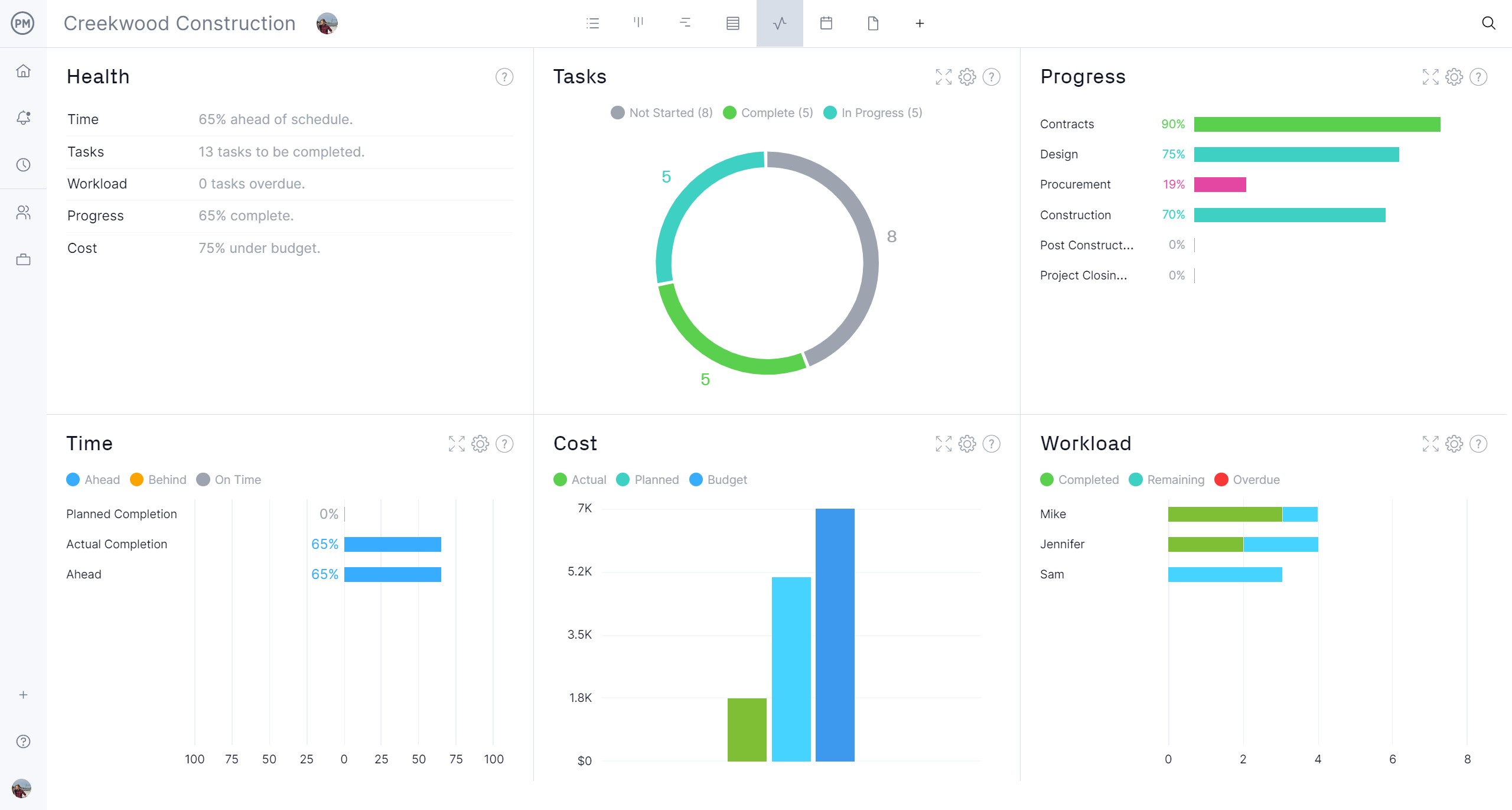
When you need more detail, use our customizable reports to get status and portfolio reports, as well as reports on timesheets, variance and workload, to name only a few. Each report can be filtered to show only the data you want to see and then shared across multiple formats to keep stakeholders updated.
Related Purchase Management Content
The purchase management process is critical for the successful execution and delivery of projects. For that reason, we’ve created dozens of blogs, templates and guides about different aspects of purchase management and other related topics. Here are some of them.
- Purchase Management: A How-To Guide With Best Practices
- What Is a Purchase Order? (Example Included)
- Project Procurement Management – A Quick Guide
- How to Make a Procurement Management Plan
- What Is Supplier Relationship Management (SRM)?
ProjectManager is online project and portfolio management software that connects teams whether they’re in the office, out on the job site, on the manufacturing floor as well as anywhere else. They can share files, comment at the task level and stay updated with email and in-app notifications. Get started with ProjectManager today for free.

